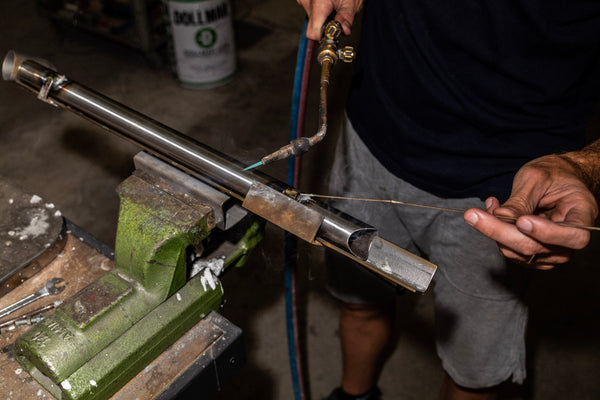
Today we met with Phil Cutti at the Stanford School of Medicine's Human Performance Laboratory in Palo Alto.
 The lab administers all manner of tests to analyze fitness, biomechanics, general health, and body composition. We subjected ourselves to the iDXA Body Composition scan. It's basically a low-dose x-ray that sweeps over your body and determines how much of you is bone, muscle, and fat. The first visit establishes a baseline. After that, an athlete can check in every couple months and see exactly how specific training is altering muscle mass and fat stores. As cyclists, we're looking for mostly lean muscle mass.
The lab administers all manner of tests to analyze fitness, biomechanics, general health, and body composition. We subjected ourselves to the iDXA Body Composition scan. It's basically a low-dose x-ray that sweeps over your body and determines how much of you is bone, muscle, and fat. The first visit establishes a baseline. After that, an athlete can check in every couple months and see exactly how specific training is altering muscle mass and fat stores. As cyclists, we're looking for mostly lean muscle mass.  Chad gets scanned. You have to keep very still in order for the image to be clear.
Chad gets scanned. You have to keep very still in order for the image to be clear. Phil straps Ian's feet together so he doesn't accidentally move or run away.
Phil straps Ian's feet together so he doesn't accidentally move or run away. Phil looks on as the GE scanner takes a look at Chad.
Phil looks on as the GE scanner takes a look at Chad.Both of us were between 10-15% body fat, which is a higher number than a caliper test had returned. Phil explained that calipers and immersion tests have a +/- 4% margin of error which comes from varying body hydration levels, the impossibility of applying calipers to organs, and subjectivity inherent in the testing methods.
The lab also does motion analysis for sports ranging from volleyball to cycling to running. By attaching small markers at key joints, cameras positioned around the lab trace the body's movements through a pedal stroke, a volleyball serve, or whatever, and a computer creates wireframe models that show exactly what the body is doing.

Thor Besier shows us a virtual skeleton going through a pedal stroke.
The Human Performance Lab's website is: http://humanperformance.stanford.edu/
Start your Build
Since 2006, we've been creating the world's finest dream bikes with our signature approach to custom builds and customer service.
Our Custom Program
AC Everywhere
You can find us just over Golden Gate Bridge in California's Marin County. Can’t come to us? We can bring the bike to you. We craft custom bikes for clients all across the U.S. and the world.
Contact us






Back to Journal